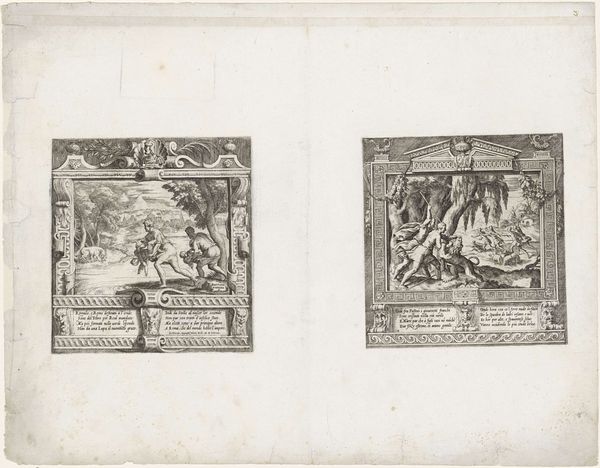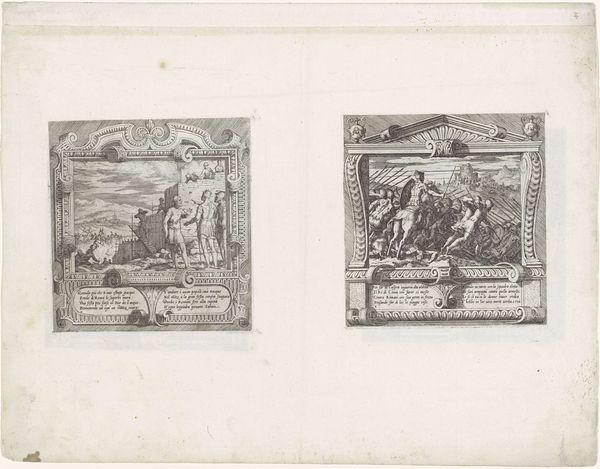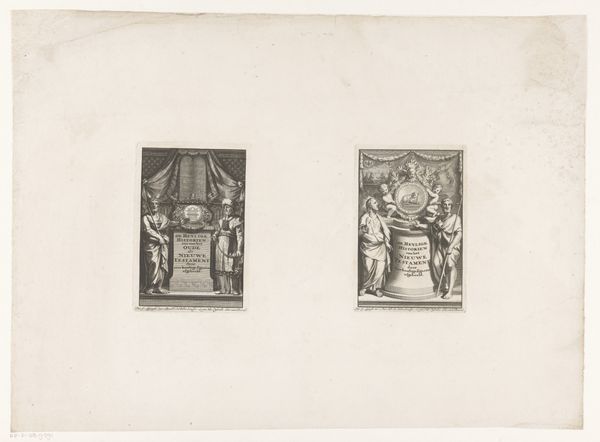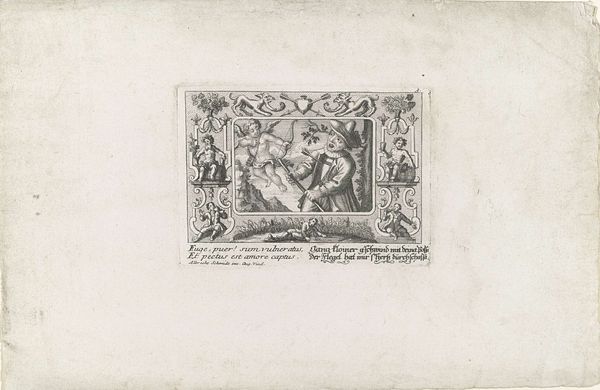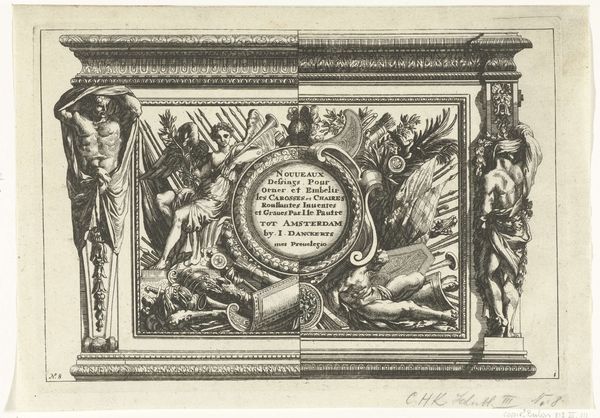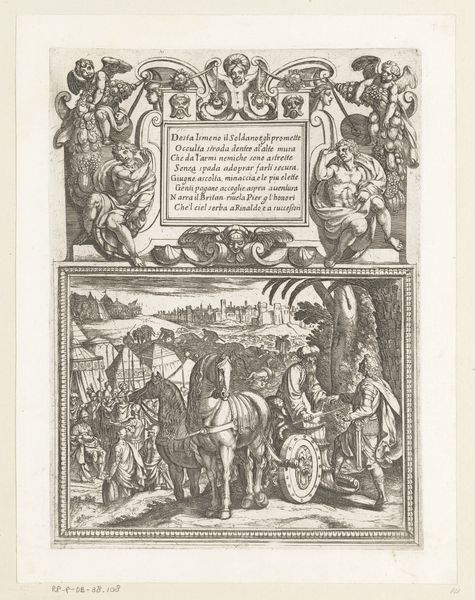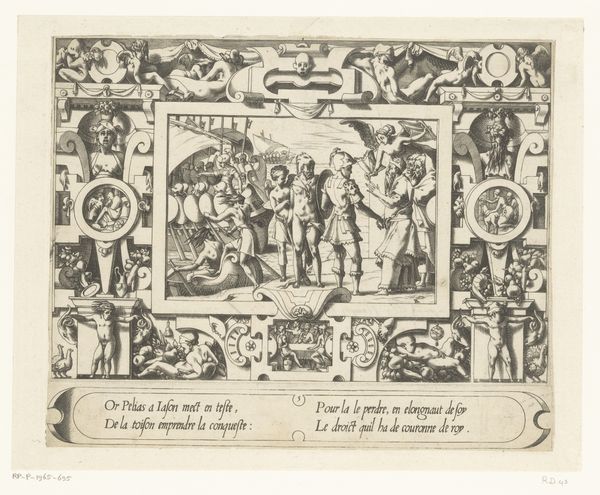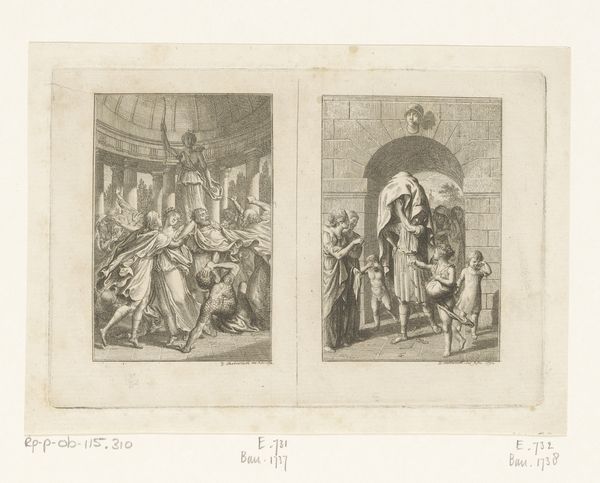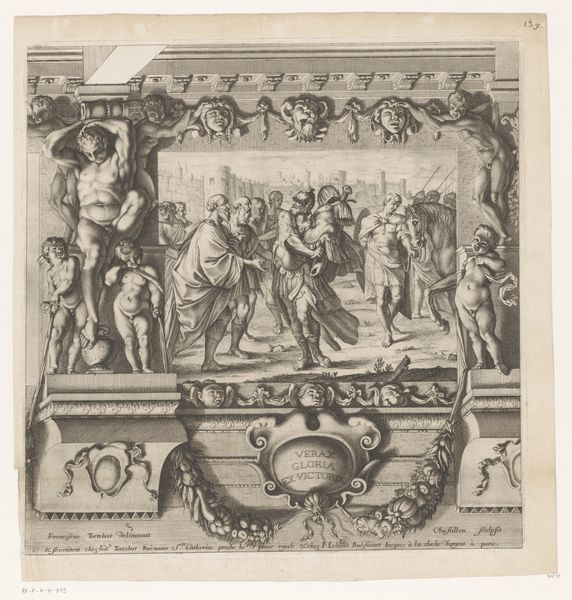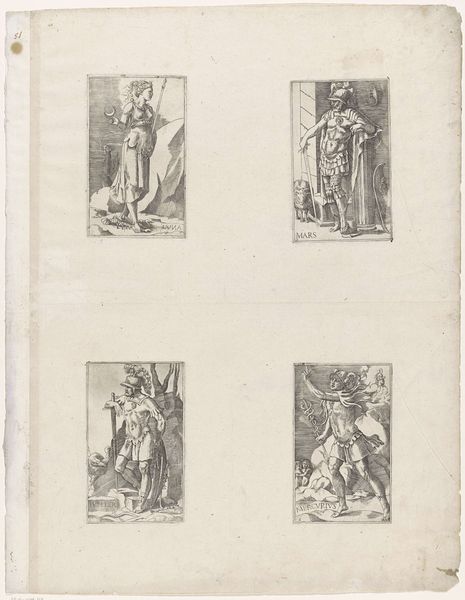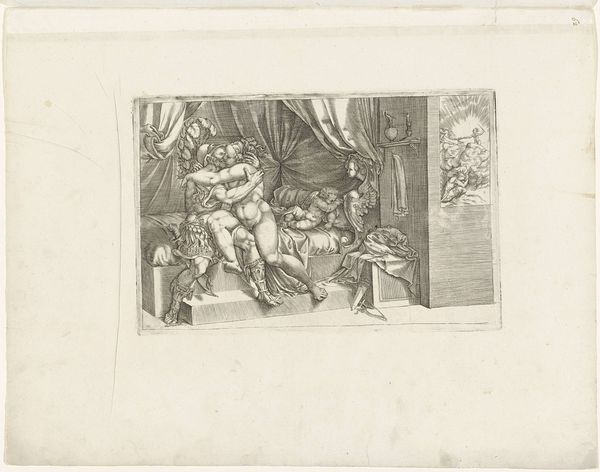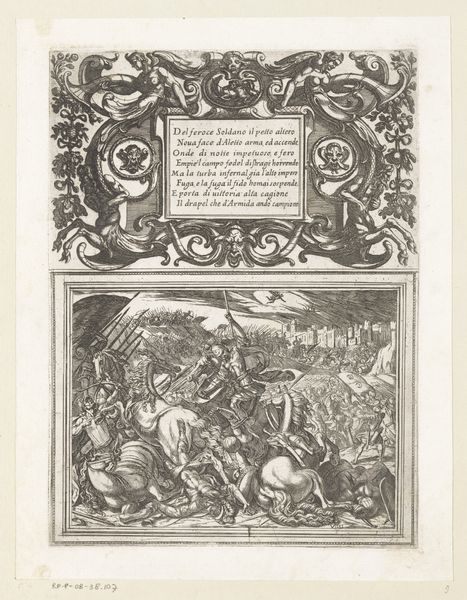
Aanval op Antemnaea / Romulus sluit vrede met de Sabijnen 1568
0:00
0:00
drawing, ink, engraving
#
drawing
#
narrative-art
#
pen sketch
#
mannerism
#
figuration
#
ink
#
line
#
pen work
#
history-painting
#
engraving
Dimensions: height 195 mm, width 186 mm, height 195 mm, width 186 mm, height 412 mm, width 543 mm
Copyright: Rijks Museum: Open Domain
These two images, “Aanval op Antemnaea” and "Romulus sluit vrede met de Sabijnen”, were created by Giovanni Battista Fontana in the late 16th century. They are made using etching, a printmaking technique that relies on the corrosive action of acid to create lines in a metal plate. The fine lines and intricate detail that define the scenes speak to the labor-intensive process of etching. Each line had to be carefully drawn through a protective coating on the metal plate, which was then submerged in acid. The longer the plate remained in the acid, the deeper the lines would be etched, allowing for variations in tone and texture. The resulting prints, such as these, could then be reproduced multiple times. The technique was widely used to disseminate images and ideas across Europe. Fontana’s prints allowed for the stories depicted to reach a wider audience, demonstrating the power of reproducible media in shaping cultural narratives. This democratizing aspect challenges traditional notions of art as unique and precious.
Comments
No comments
Be the first to comment and join the conversation on the ultimate creative platform.
